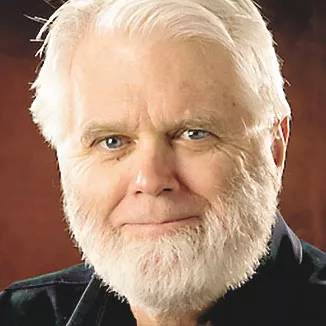"Lawless." "Czar." "Dictator." "Emperor." "Impeachable offenses." From members of Congress to pundits, these are just a few of the many over-the-top, right-wing reactions to President Obama's recent executive order on American immigration policy.
Might we pause long enough to put things into historical perspective? The fact is, President Obama has set records for caution and modesty — much to the dismay of many in his own party. He has issued only 193 executive orders, an average of 33 a year. This is the lowest rate of any president in the modern era. By comparison, Bill Clinton issued 364 over eight years, an average of 46; Ronald Reagan issued 381, an average of 48. And how about the heavy hitters? Dwight Eisenhower clocked in at 484 executive orders, an average of 61; Harry Truman, 907, or 117 a year. But the Babe Ruth of executive orders was Franklin Delano Roosevelt: a whopping 3,721 — 303 per year! That's nearly 10 times as many as Obama.
Article II of the Constitution opens with: "The executive power shall be vested in a President of the United States of America." What is executive power? It has come to mean pretty much whatever the occupant of the White House says it means. FDR took it to mean that he could create the Works Progress Administration, providing work for 3 million Americans. Richard Nixon took it to mean that he could end discrimination in plants doing business with the government.
Article II also states that the president is to be commander in chief of the armed forces, and it certainly has been the case that national security, when combined with executive power, has served as the catalyst for many of the most sweeping executive orders. Truman took the authority to end segregation in the armed forces. Barack Obama ended discrimination against gays in the military.
Then there's this, from historian James Randall:
No president has carried the power of presidential edict and executive order (independently of Congress) so far as [Abraham Lincoln]... It would not be easy to state what Lincoln conceived to be the limit of his powers. In the 80 days that elapsed between Abraham Lincoln's April 1861 call for troops — the beginning of the Civil War — and the official convening of Congress in special session on July 4, 1861, Lincoln performed a whole series of important acts by sheer assumption of presidential power. Lincoln, without congressional approval, called forth the militia to "suppress said combinations," which he ordered "to disperse and retire peacefully" to their homes. He increased the size of the Army and Navy, expended funds for the purchase of weapons, instituted a blockade — an act of war — and suspended the precious writ of habeas corpus, all without congressional approval.
Lincoln interpreted "executive power" to mean he could do whatever he needed to do to save the union. To this end, he also issued his Emancipation Proclamation. As Randall points out, "Nothing in the Constitution authorized the Congress or the President to confiscate property without compensation."
Roosevelt cited national security to justify incarcerating Japanese-Americans — in retrospect, an outrageous act. Executive Order 9066 authorized the Army to declare certain areas off limits for certain classes of people, aka Japanese-Americans. Executive Order 9102 established the War Relocation Authority, which ran the camps. These orders extended to Germans and Italians, but only about 2,000 were ever detained. On the West Coast, some 120,000 Japanese were sent to the camps.
But the West Coast was never seriously threatened. A single Japanese submarine operated off the coast — it shelled an oil refinery near Santa Barbara, California, and was later sunk. Back on the East Coast, where German-Americans were not being rounded up, there was an eight-month period from January through August 1942 when Nazi submarines operating in coastal waters sank 609 merchant ships, many in plain view of the American coast.
Japanese-Americans weren't rounded up in Hawaii, a more likely threat. Why? Because there were so many of them that the economy would have ground to a halt. So Roosevelt wasn't dealing with a serious national threat; he was reacting to xenophobia and racism. And he did it using executive orders.
The future seems obvious: Immigration presents a range of complex national and international security threats that must be addressed, and the Constitution puts the president right on the bridge of our ship of state. Put another way, Barack Obama is the least of Congress' worries. The times, they are a-changing, and our rickety, 19th century legislative institution doesn't seem to get it.
Instead of wasting more time on conspiracy mongering and Obama-bashing while they become ever more irrelevant, the incoming Republicans might want to try something different. Like maybe giving the lost art of statesmanship a try. ♦






















